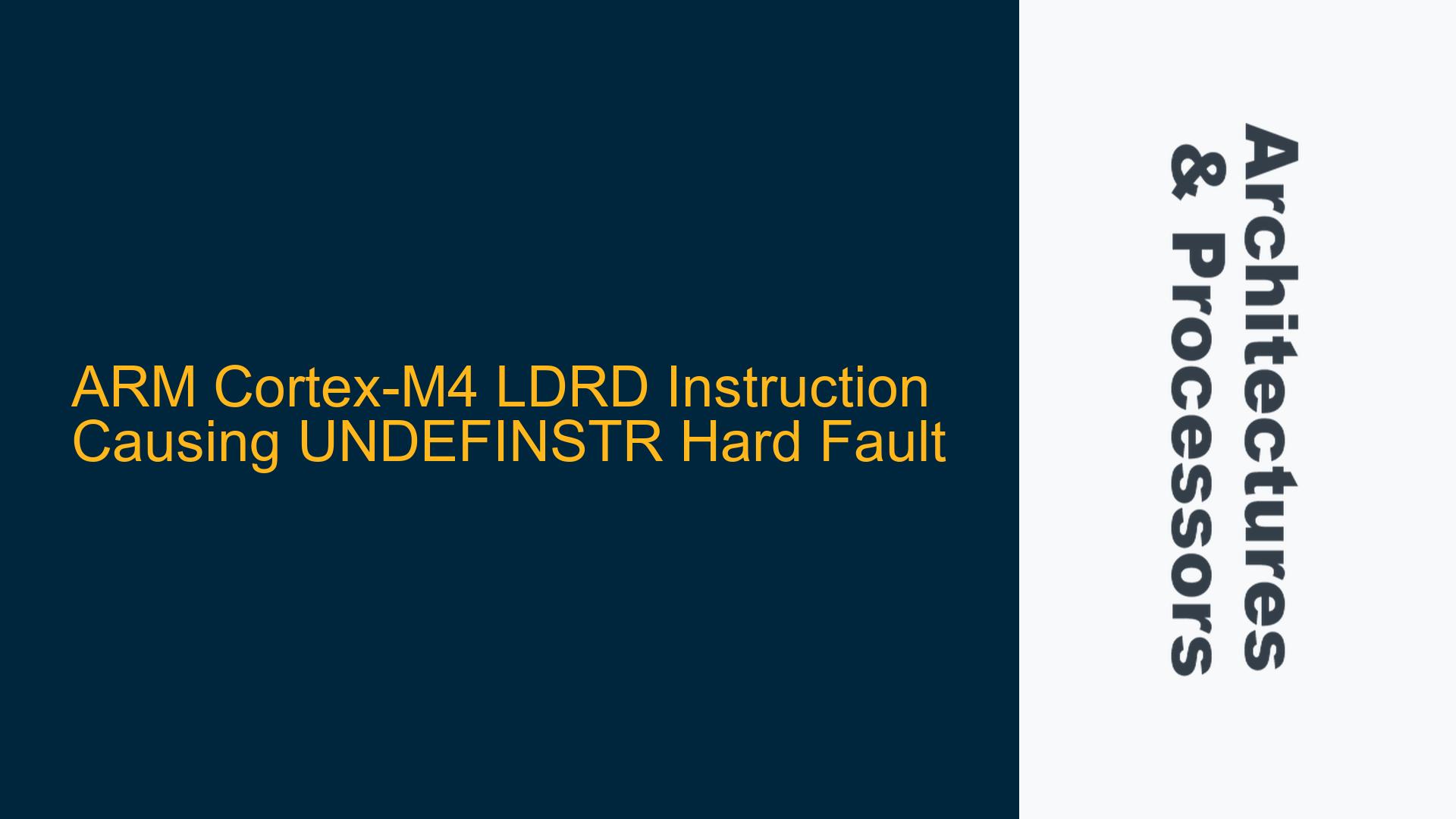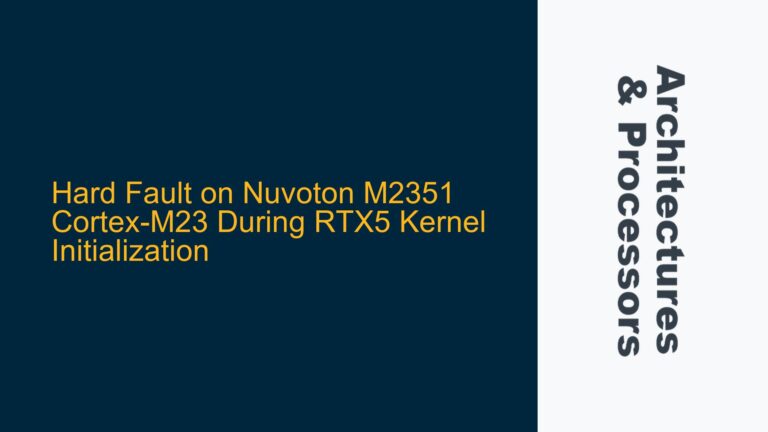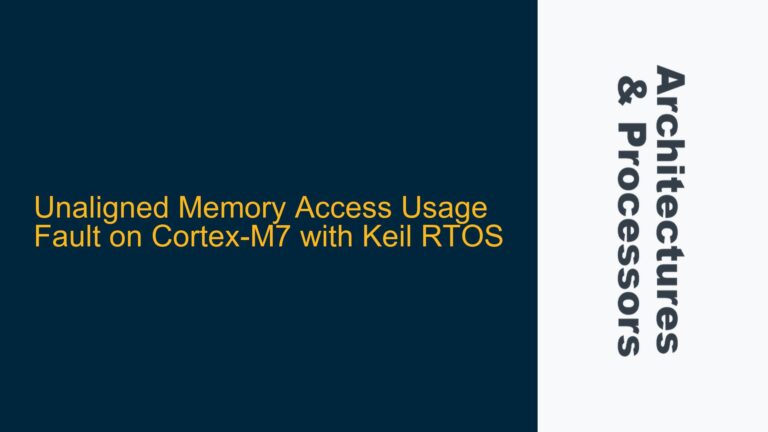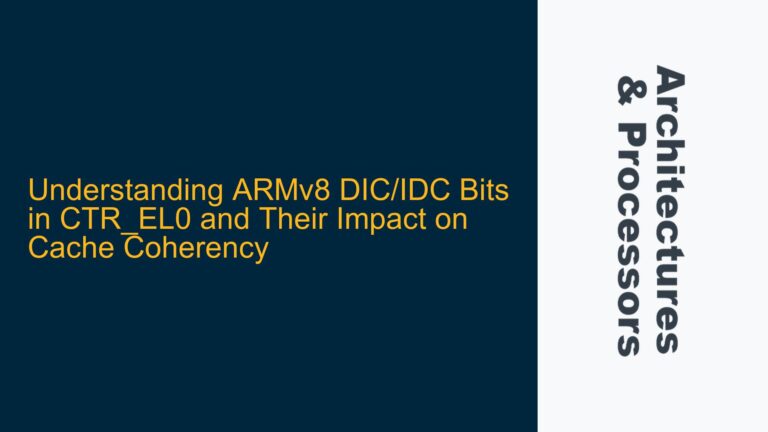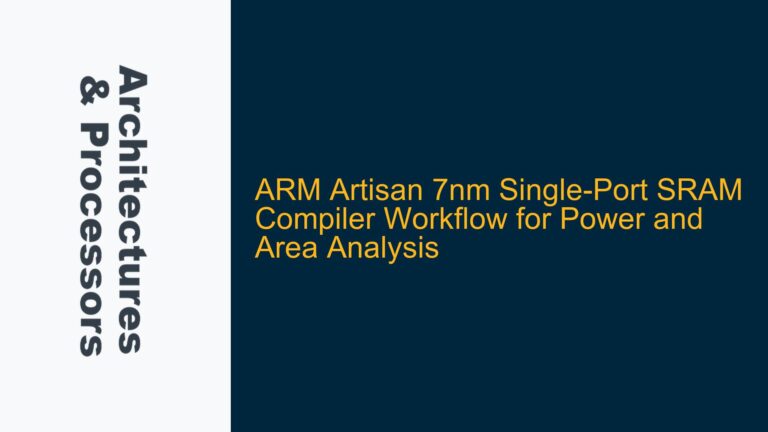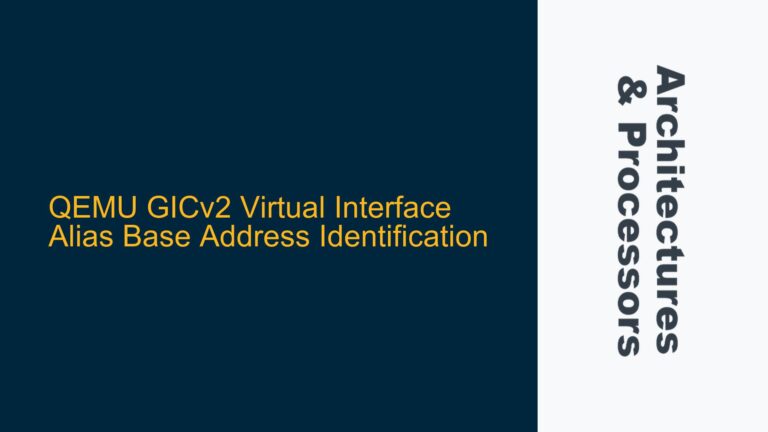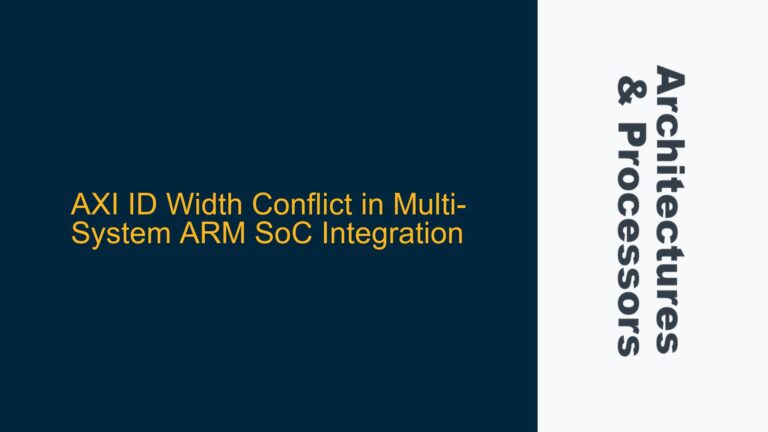ARM Cortex-M4 LDRD Instruction and UNDEFINSTR Hard Fault Analysis
The ARM Cortex-M4 is a widely used microcontroller core known for its efficiency and performance in embedded systems. However, certain edge cases can lead to unexpected behavior, such as the UNDEFINSTR (Undefined Instruction) hard fault. This issue is particularly perplexing when it involves the LDRD (Load Doubleword) instruction, which is a standard ARM instruction for loading two 32-bit words from memory into two registers. In this analysis, we will delve into the root causes of this issue, explore potential scenarios that could lead to such a fault, and provide detailed troubleshooting steps to resolve it.
LDRD Instruction Execution and UNDEFINSTR Hard Fault
The LDRD instruction is designed to load two 32-bit words from memory into two registers. On the ARM Cortex-M4, this instruction is typically used when dealing with 64-bit data types, such as uint64_t. The instruction itself is 4 bytes long and is executed atomically, meaning that the processor should either complete the entire instruction or not execute it at all. However, in some cases, the Cortex-M4 may encounter an UNDEFINSTR hard fault when executing the LDRD instruction. This fault indicates that the processor has attempted to execute an instruction that it does not recognize or support.
The UNDEFINSTR fault is usually caused by one of the following scenarios:
- Instruction Corruption: The instruction in memory may have been corrupted, leading to an invalid opcode.
- Misaligned Instruction Fetch: The program counter (PC) may have jumped to an address that is not aligned with the instruction boundary, causing the processor to misinterpret the instruction stream.
- Stack Corruption: The stack may have been corrupted, leading to an incorrect return address or instruction fetch.
- Hardware Defect: Although rare, a hardware defect in the processor or memory subsystem could cause the instruction to be misdecoded.
In the case of the LDRD instruction, the most likely cause of the UNDEFINSTR fault is a misaligned instruction fetch or stack corruption. The LDRD instruction is 4 bytes long, and if the program counter jumps into the middle of this instruction, the processor may attempt to execute an invalid opcode, leading to the UNDEFINSTR fault.
Misaligned Instruction Fetch and Stack Corruption
Misaligned instruction fetch occurs when the program counter (PC) jumps to an address that is not aligned with the instruction boundary. On the ARM Cortex-M4, instructions are either 2 bytes (Thumb) or 4 bytes (Thumb-2) in length. The LDRD instruction is a 4-byte Thumb-2 instruction. If the PC jumps to an address that is not aligned with a 4-byte boundary, the processor may misinterpret the instruction stream, leading to an invalid opcode and an UNDEFINSTR fault.
Stack corruption can also lead to misaligned instruction fetch. If the stack is corrupted, the return address stored on the stack may be incorrect. When the processor attempts to return from a function, it may jump to an invalid address, leading to a misaligned instruction fetch. This is particularly problematic in multi-threaded environments, such as those using FreeRTOS, where stack corruption can occur due to race conditions or improper stack management.
The addition of a NOP (No Operation) instruction before the LDRD instruction can mitigate this issue by ensuring that the LDRD instruction is aligned on a 4-byte boundary. The NOP instruction is 2 bytes long, so adding it before the LDRD instruction shifts the LDRD instruction by 2 bytes, ensuring that it is aligned on a 4-byte boundary. This reduces the likelihood of a misaligned instruction fetch, even if the stack is corrupted or the program counter jumps to an incorrect address.
Implementing Instruction Alignment and Stack Integrity Checks
To prevent the UNDEFINSTR fault caused by the LDRD instruction, it is essential to ensure that the instruction is aligned on a 4-byte boundary and that the stack is not corrupted. The following steps can be taken to achieve this:
-
Instruction Alignment: Ensure that the LDRD instruction is aligned on a 4-byte boundary. This can be done by adding a NOP instruction before the LDRD instruction. The NOP instruction is 2 bytes long, so adding it before the LDRD instruction shifts the LDRD instruction by 2 bytes, ensuring that it is aligned on a 4-byte boundary.
-
Stack Integrity Checks: Implement stack integrity checks to detect and prevent stack corruption. This can be done by adding stack canaries or using a memory protection unit (MPU) to protect the stack from unauthorized access. Stack canaries are special values placed on the stack that are checked before returning from a function. If the canary value has been modified, it indicates that the stack has been corrupted, and the program can take appropriate action, such as resetting the system or logging the error.
-
Debugging and Tracing: Use debugging and tracing tools to monitor the instruction flow and detect any misaligned instruction fetches. The ARM Cortex-M4 supports Embedded Trace Macrocell (ETM) and Instrumentation Trace Macrocell (ITM) for instruction tracing. These tools can be used to capture the instruction flow and identify any jumps to misaligned addresses.
-
Code Review and Static Analysis: Perform a thorough code review and static analysis to identify any potential issues that could lead to stack corruption or misaligned instruction fetches. This includes checking for buffer overflows, uninitialized variables, and improper use of pointers.
-
Hardware Verification: Verify that the hardware is functioning correctly and that there are no defects in the processor or memory subsystem. This can be done by running diagnostic tests and checking for any hardware errors.
By following these steps, you can reduce the likelihood of encountering an UNDEFINSTR fault caused by the LDRD instruction on the ARM Cortex-M4. It is important to note that while adding a NOP instruction before the LDRD instruction can mitigate the issue, it is not a complete solution. The root cause of the issue, such as stack corruption or misaligned instruction fetch, must be identified and addressed to ensure the reliability and stability of the system.
Conclusion
The UNDEFINSTR hard fault caused by the LDRD instruction on the ARM Cortex-M4 is a complex issue that can be caused by a variety of factors, including misaligned instruction fetch and stack corruption. By ensuring that the LDRD instruction is aligned on a 4-byte boundary and implementing stack integrity checks, you can reduce the likelihood of encountering this issue. Additionally, using debugging and tracing tools, performing code reviews, and verifying the hardware can help identify and address the root cause of the issue. By taking a comprehensive approach to troubleshooting and system design, you can ensure the reliability and stability of your embedded system.
